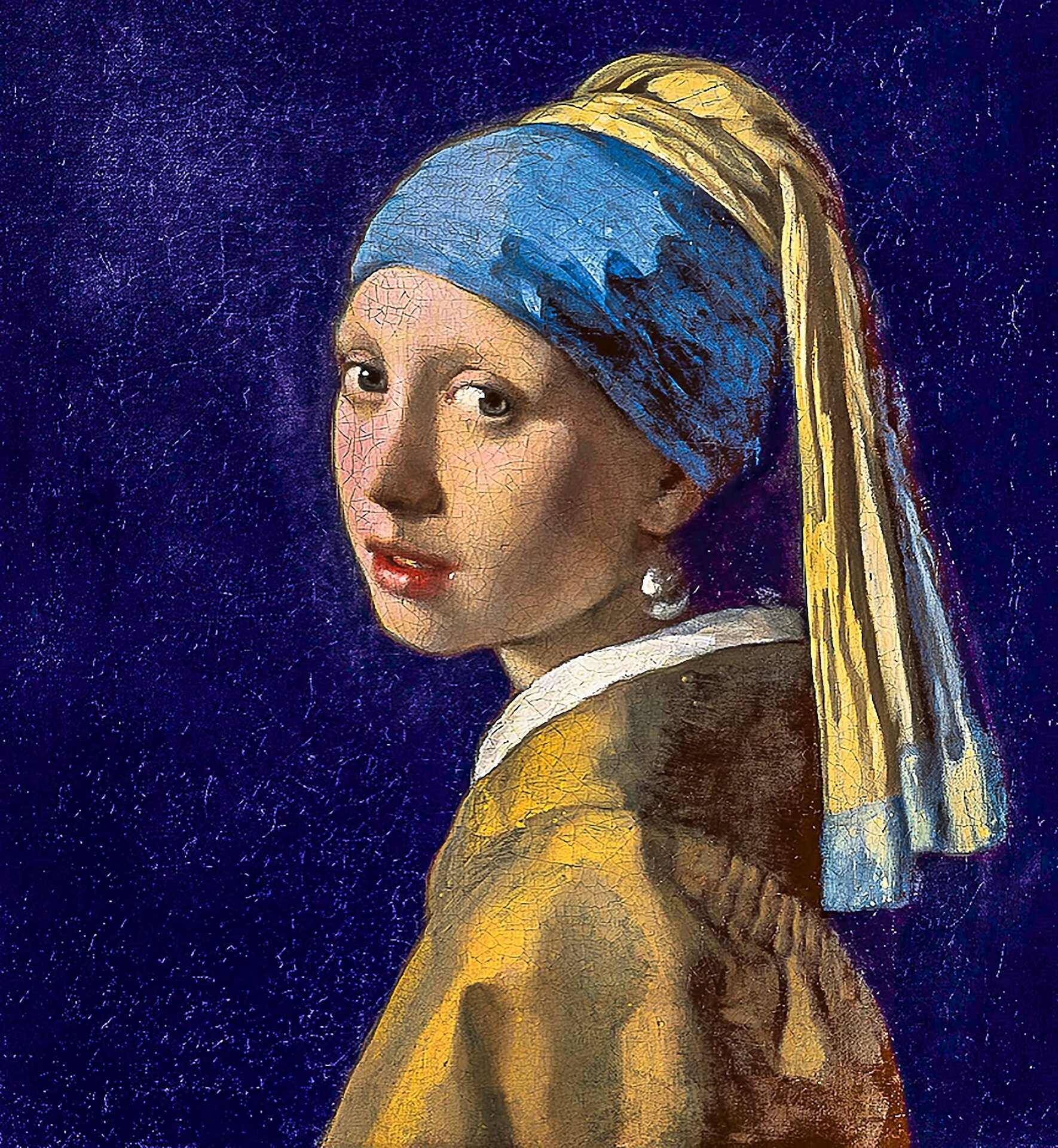Famous Artworks and Their Meanings: Decoding Symbolism and Themes
Art has always been a powerful medium for conveying emotion, ideas, and stories. Throughout history, artists have used symbolism, color, composition, and subject matter to convey deeper meanings. Some of the world’s most famous artworks carry hidden layers of symbolism and messages that reflect the culture, politics, and philosophies of their time. In this article, we’ll explore several iconic works of art and decode the symbolism and themes that make them unforgettable.

Leonardo da Vinci's Mona Lisa (1503-1506)
Perhaps the most famous painting in the world, Mona Lisa has captivated viewers for centuries. Known for her enigmatic smile, this portrait is often interpreted in numerous ways, but there are several key themes that stand out.
Symbolism and Themes:
-
Mystery of the Smile: The ambiguity of Mona Lisa's smile has sparked countless interpretations. Some see it as a representation of inner peace, while others suggest it reflects a more complex emotional state, such as a mix of happiness and sadness. This elusive expression is part of what gives the painting its enduring mystery.
-
The Ideal Woman: The Mona Lisa is often seen as an idealized portrait of womanhood, depicting calmness, grace, and a subtle, almost otherworldly beauty. Her gaze and pose suggest a timeless, serene nature.
-
Naturalism and Humanism: The background of the painting, a seemingly realistic landscape, coupled with the detailed rendering of Mona Lisa’s face and hands, reflects the Renaissance interest in humanism and the study of nature.
Edvard Munch's The Scream (1893)
The Scream is one of the most iconic images in the history of art, expressing intense emotion and psychological turmoil. The figure in the painting is often interpreted as a symbol of existential angst, fear, and anxiety.
Symbolism and Themes:
-
Existential Angst: Munch's The Scream is often seen as a visual representation of existential dread. The figure appears to be screaming in terror, overwhelmed by an oppressive, surreal sky. This image of isolation and anxiety captures the deep psychological tension of the modern world.
-
The Influence of Nature: The swirling sky and turbulent landscape suggest that nature is in sync with the figure’s emotional state. This connection between human suffering and the environment highlights the emotional power of the natural world.
-
Psychological Expressionism: Munch’s work is a prime example of the Symbolist and Expressionist movements, where emotional and psychological experiences take precedence over realistic depictions of the world. The painting captures the inner turmoil of the individual.
Vincent van Gogh's Starry Night (1889)
Van Gogh's Starry Night is a masterpiece filled with swirling skies and vivid colors. Painted during his time in a mental asylum, this work is often interpreted as a reflection of van Gogh’s emotional and psychological state, as well as his unique vision of the world.
Symbolism and Themes:
-
The Struggle Between Light and Darkness: The swirling sky, filled with stars, contrasts sharply with the dark, quiet village below. Some interpret this contrast as a representation of van Gogh’s inner conflict, between hope (symbolized by the bright stars) and despair (the dark, still village).
-
Emotional Turmoil and Solitude: The chaotic, exaggerated forms in the sky may symbolize the artist’s feelings of isolation and instability. Van Gogh painted this scene from his window, but the intensity of the landscape reflects his emotional upheaval, showing that his view of the world was deeply colored by his inner struggles.
-
Symbol of Hope: The stars, often interpreted as symbols of hope and guidance, may represent van Gogh’s desire for peace and clarity amidst his personal challenges.
Pablo Picasso's Guernica (1937)
Picasso’s Guernica is a large-scale painting created in response to the bombing of the Spanish town of Guernica during the Spanish Civil War. The painting is a powerful anti-war statement and a poignant expression of suffering and devastation.
Symbolism and Themes:
-
Suffering and Destruction: The chaotic, distorted figures in the painting reflect the violence and anguish caused by war. Picasso uses abstract, exaggerated forms to represent the human cost of the attack—screaming women, a dying horse, and a wounded man.
-
The Trauma of War: Guernica portrays the horror of war on civilians, particularly women and children. The lack of clear, identifiable figures symbolizes the dehumanization that occurs in wartime. Picasso’s use of monochrome colors—grays, blacks, and whites—heightens the bleakness of the scene.
-
Hope Amidst Chaos: Despite the overall sense of destruction, some elements in the painting, like the lightbulb shining down on the scene, are seen as symbols of hope and the potential for renewal after destruction.
Johannes Vermeer’s Girl with a Pearl Earring (1665)
Known as the “Mona Lisa of the North,” Vermeer’s Girl with a Pearl Earring is one of the most famous and enigmatic portraits in Western art. The girl’s direct gaze and the softness of her features have sparked numerous interpretations.
Symbolism and Themes:
-
Youth and Innocence: The girl’s youthful appearance and the simplicity of her clothing suggest purity and innocence. However, her gaze, which holds a sense of mystery, suggests that there may be more beneath the surface.
-
The Role of Light: Vermeer was known for his mastery of light. In this painting, the soft light that illuminates the girl's face and the pearl earring highlights her delicate features, emphasizing her beauty and creating an intimate connection with the viewer.
-
Identity and Mystery: The girl’s identity remains unknown, which only adds to the allure and intrigue of the painting. Some believe she may be a fictional character, while others speculate that she is a model or an idealized version of womanhood.

Michelangelo’s Creation of Adam (1512)
Part of the Sistine Chapel ceiling, Michelangelo’s Creation of Adam depicts the biblical scene of God giving life to Adam. This fresco is a masterpiece of Renaissance art and showcases themes of creation, divine connection, and human potential.
Symbolism and Themes:
-
Divine Connection: The outstretched hands of God and Adam are one of the most iconic images in art history. The near-touching of their fingers symbolizes the transmission of life and the intimate connection between the divine and the human.
-
Human Potential: The portrayal of Adam as a relaxed, muscular figure represents the human potential for greatness. His pose reflects the Renaissance ideals of humanism, focusing on the beauty and power of the human form.
-
The Power of Creation: God’s outstretched hand conveys authority and the act of creation, while Adam’s more passive posture symbolizes humanity’s dependence on divine will, yet also its capacity to grow and thrive.
Conclusion: The Enduring Power of Art
Famous artworks continue to resonate with viewers across centuries because they capture universal themes—love, fear, joy, suffering, and the human experience. Whether it’s the mysterious smile of the Mona Lisa, the existential angst of The Scream, or the divine touch in Creation of Adam, these masterpieces carry deep meanings that transcend time and place. By decoding their symbolism and themes, we gain a richer understanding of the artists' intentions, as well as the broader historical and cultural contexts in which they were created. In this way, art not only beautifies the world, but it also serves as a mirror to the complex emotions and ideas that shape human existence.












